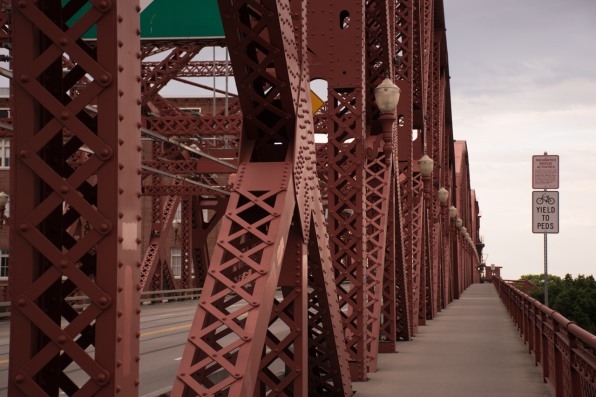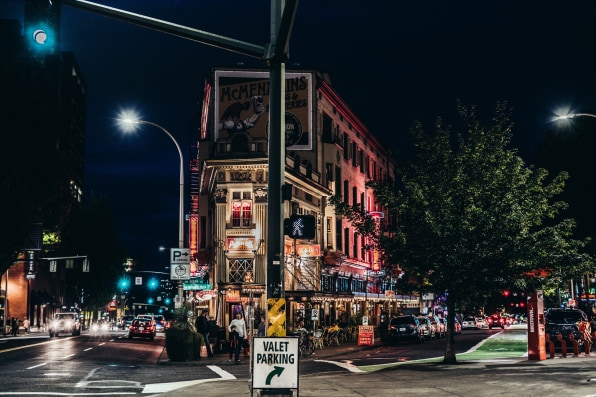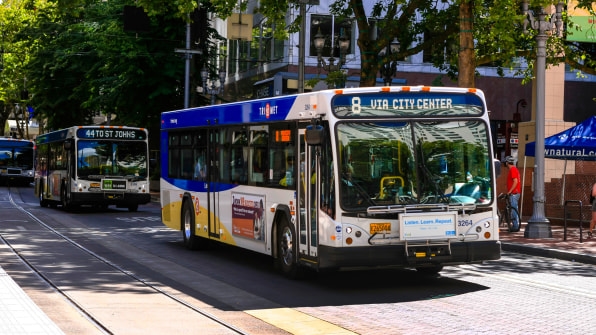How Portland is building equity into its climate planning
In Portland, Oregon, we’ve been addressing climate-related issues for over 25 years. That probably surprises no one, as we’re often recognized for that leadership, but it doesn’t tell the full story. Here is the Portland climate story that has not been told.
Yes, we were the first U.S. city to adopt a strategy to reduce greenhouse gas emissions in 1993. Yes, we have a legacy of climate-friendly programs targeting transportation, energy, land use, and waste prevention and recycling. And yes, that has led to a steady decrease in carbon emissions while our economy and population has grown. All good stuff.
But while we might be making progress on the climate, we’ve failed to make progress on a key social front. In our climate work, we’ve neglected our communities of color. Portland’s white residents make up 77% of the population but they are not experiencing the most harmful effects of climate change. It’s people of color and low-income residents that are on Portland’s frontlines of climate change. And we’ve failed them.
So, now Portland is seeking to move beyond traditional one-size-fits-all approaches, which tend to exacerbate these existing inequities by not tending to specific impacts. We’re looking to develop climate actions that simultaneously aim for a universal goal (e.g., increasing transit ridership), while also addressing disparities in how frontline communities can access that goal.
In order to make this happen, we’re rethinking our entire approach to climate policymaking.
First, we’re much more aware of context
Decades of institutional racism and gentrification pushed black, Indigenous, Asian, and Latinx communities from Portland’s central city to its outer neighborhoods. What was waiting for them there? Poor transit options, a deficit of trees and parks, and inequitable investments in infrastructure. These areas are also further from job centers, leading to longer commute times and distances and increased transportation costs.
These communities were also largely denied the benefits that historically flowed from years of investments in climate-friendly programs, policies, and infrastructure. Now, they face disproportionate climate impacts that take a real toll on their families and communities. And they disproportionately experience the negative health effects of dangerously poor air quality, urban heat islands, and unsafe transportation connections.

Second, we’re changing the status quo
In response to these aforementioned realities, the update to Portland’s Climate Action Plan will prioritize high-impact carbon emission reduction strategies that improve the health, prosperity, and resilience of Portland’s frontline communities.
City of Portland staff are currently working alongside community and youth leadership to create a collaborative process that will lead to community-centered actions for an updated climate plan. We want to prioritize actions that both reduce carbon emissions and create community benefits for those who have been left behind.
Third, we’re making space and time for the work
In the face of our global climate emergency, we recognize that this new effort will take time. We need to do things differently if we want to avoid the mistakes of the past. We will no longer treat community outreach like a just another step in our policy process and refocus the work as a priority. And we are engaging with the entire community, from climate justice leaders and industry groups to environmental organizations and youth. That means everyone.

Fourth, we’re asking better questions
In prior climate action plans, when we focused on transportation, for example, which accounts for 42% of Portland’s carbon emissions, we increased walking, biking, and mass transit use. Seems logical enough. Billions of dollars of investment in transit and transit-oriented development, and bike and pedestrian infrastructure, helped keep downward pressure on emissions.
Job done? Far from it. In recent years, the trend has reversed and is ticking upward with year-over-year increases, resulting in a 14% increase in transportation emissions from their lowest levels in 2012. Clearly, we weren’t doing something right.
Portland’s traditional climate-planning approach to this problem would’ve been to set even more aggressive targets for increasing, say, bus ridership to reduce vehicle miles traveled, congestion, and air pollution. But if we want to increase bus ridership, as a signature goal of our next climate plan, we need to ask the right questions.
For example, does this approach account for the needs and experiences of frontline communities? And instead of a question like “How do we get more people on the bus?” we should instead be asking more probing questions like, “Who can’t ride the bus safely, and why?”
Lastly, we have a lot to learn from those who are most impacted
Our ability to do this work has come from the generous time and wisdom of numerous leaders from impacted communities who have helped us connect the dots on institutional racism and climate. We couldn’t have gotten to this point of understanding without them, and our next generation of solutions depends on them. We are learning when to follow and when to lead, we are learning how to collaborate and partner to shift power dynamics, we are learning how to invest and redistribute to shift the landscape toward better outcomes, and we are learning what accountability really means. Changing systems is hard work, yet we’ve found the work of justice is asking us to be a better version of ourselves.
Let’s explore this bus example more.

Case Study: Bus Ridership
We’ve known that bus use is better for the climate than car use, and even more so if those buses are powered by clean fuels like electricity and if frequent routes serve the places where people live, work, and play.
Equally important is that there is a connected network of sidewalks, crosswalks, and accessibility features so that people can arrive to the bus stop safely. But we’re nowhere near the level of safety our citizens deserve. Take a look:
Without addressing these underlying systematic issues, we’ll never get enough people riding the bus to greatly decrease our carbon emissions. Doing what we’ve always done (e.g., more transit routes, electric buses) but just doing those things harder, faster, or with better messaging isn’t going to work.
This is the kind of new thinking that’s needed in our climate work.
Next Steps
By factoring in context, changing the status quo, creating more space and time, and asking different questions, we’re hopeful that we’ll redefine what successful climate action looks like. We recognize that we need to do things differently, and we’re beginning that journey now.
Actions that significantly reduce carbon emissions are not enough. We need to create just and equitable solutions and offer tangible benefits to the frontline communities most impacted by climate change. And, as a local government, we have the flexibility to try new approaches to the intertwined challenges of climate change and social injustice.
Alisa Kane is the climate action manager for the City of Portland Bureau of Planning and Sustainability
Portland is a member of the Carbon Neutral Cities Alliance, a collaboration of leading global cities cutting greenhouse gas emissions by 80% to 100% by 2050 or sooner. This is a seven-part series featuring bold actions by cities to accelerate progress toward carbon neutrality, based on CNCA’s Game Changers Report.
(24)



